The Therm-a-Rest NeoAir XLITE NXT has been buzzing in the hiking world for a while, so I was excited to put it to the test on Italy’s Alta Via 1. The previous model was notoriously noisy, but the NXT stays pretty quiet; I could roll over without waking my partner, the campsite or any nearby marmots.
There’s ten products in the NeoAir sleeping mat range, from the winter-ready XTherm to the plush NeoLoft; they all share the same core design, but each is tuned towards different seasons and priorities.
The XLite NXT Regular is the lightest sleeping mat of the bunch, built for those who travel fast and light; because of this, it fits into our best sleeping mats for backpacking group test. The XLite NXT range also offers a Regular Wide, MAX and Short version.
Find the Regular Wide, MAX and Short versions here.
Pros
- Exceptional weight:warmth ratio
- Thick enough to smooth over uneven terrain
- Less noisy than the previous model
- Intuitive to deflate during the night
- Super speedy to pack away
- Can be used in all but the harshest UK conditions
Cons
- Too narrow for some campers
- Less suitable for a low-profile/tapered tent
- Pump sack isn't as efficient as some
| RRP: | £225/$209.95 |
| Dimensions: | 183cm x 51cm x 7cm (height, width, depth) |
| Thickness: | 7cm |
| Packed size: | 25cm x 9cm |
| Weight: | 447g (including pump back and stuff sack) |
| Materials: | Nylon, Polyurethane |
| R-value: | 4.5 |
For context, I sit on the “normal” end of the ultralight spectrum – I’m happy to carry a little extra weight for comfort, but keeping my pack light is still a priority.
That said, I’ve also considered how this mat might work for serious ultralighters – types who like to cut their toothbrush in two – and for hikers who prioritise maximum comfort over weight.
So how did it hold up on my Alta Via hike? Like most gear, it’s brilliant for some, but not the best choice for others – keep reading to find out where it fits for you.
Comfort
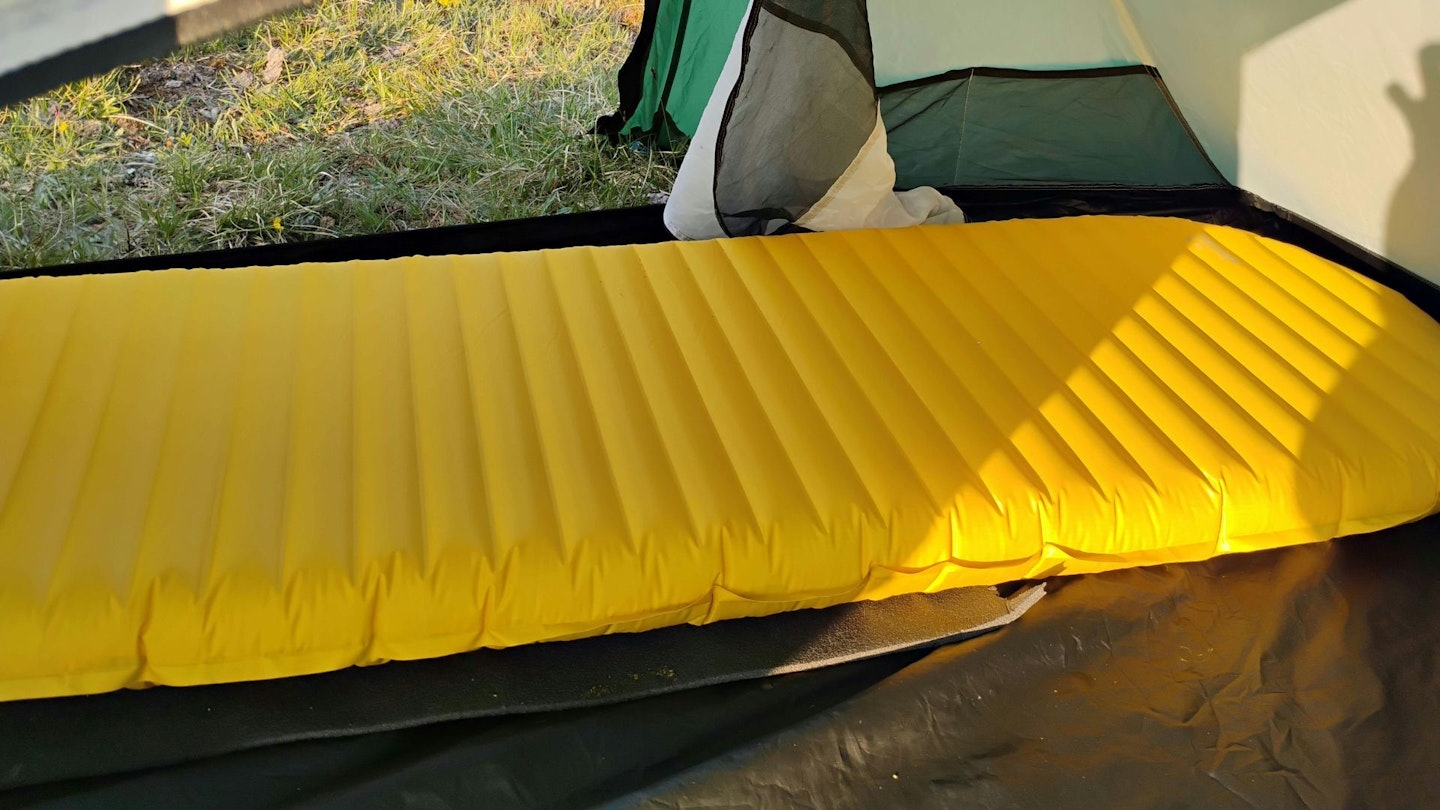
The baffles on this mat – internal structures that trap air into smaller sections – are horizontal. Compared to some competitor mats, they’re not particularly pronounced; this means that you get a stable, flat surface to sleep on.
Choosing between horizontal or vertical baffles, or even a textured surface, largely comes down to what you find comfortable. It’s worth trying out a few different kinds of pad to see what you prefer.
I tend to prefer vertical baffles as they keep me contained better, and I wonder whether a mat that’s as narrow as this would be better off with them. I tested the regular version of the NeoAir, and found my arms often slipped off the mat.
My product research suggests that this has been an issue for other users too. If you value comfort over backpack weight, it’s probably best to opt for the wider version (450g), or the MAX Rectangular Wide (550g).
Materials, shape and size
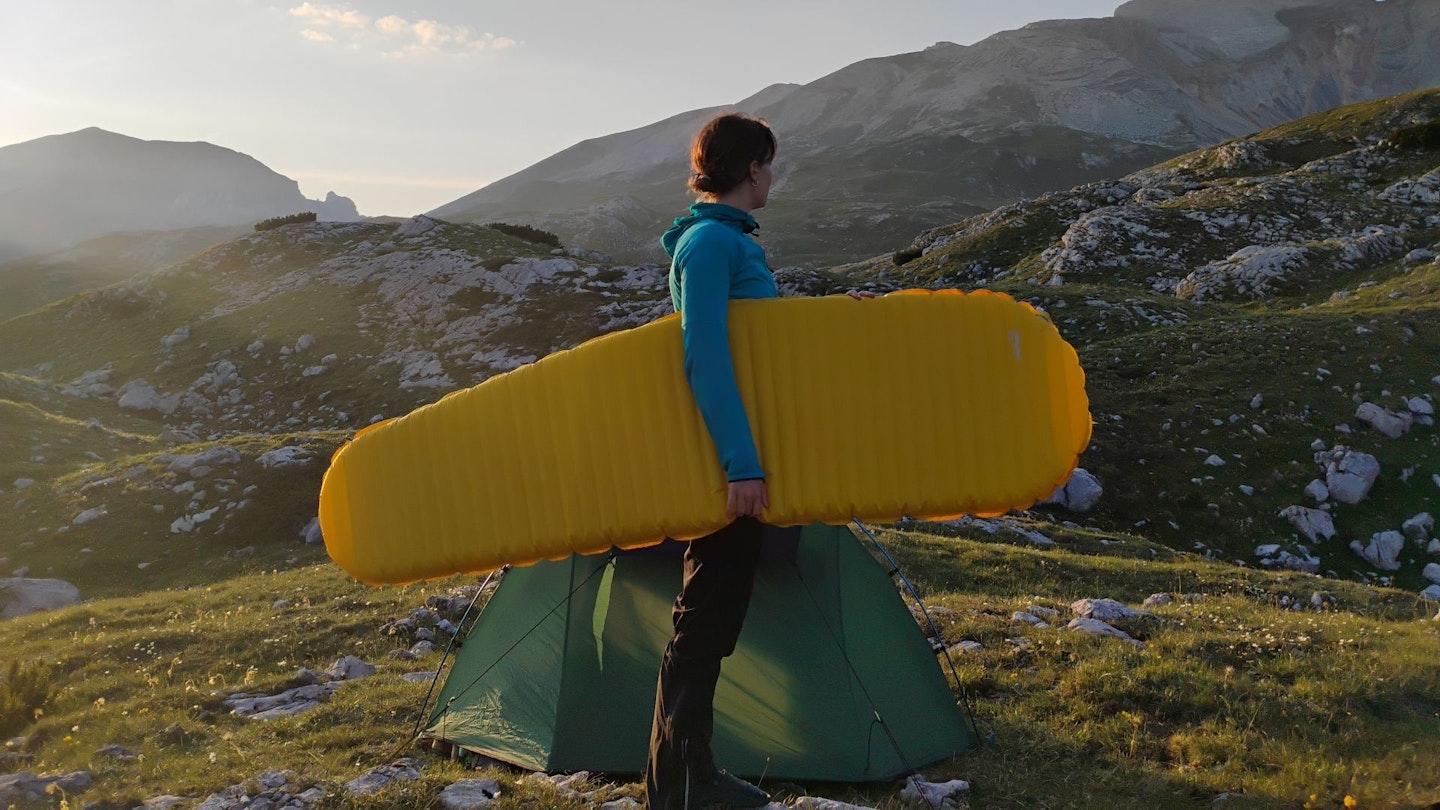
The previous version of the NeoAir XLITE was notoriously noisy, crinkling like a crisp packet whenever you toss and turn (which of course just leads to more tossing and turning).
Therm-a-Rest claims that this updated model has an 83% noise reduction, due to a change in its internal construction. While it’s not completely silent, there’s no crinkly sound. And if you cover it with a sleeping bag liner, it’s basically noiseless.
It’s not the most rugged sleeping mat – which isn’t surprising given the weight – but the 30D nylon fabric doesn’t feel as flimsy as some, and should hold up to normal wear and tear. If it did rip, it comes with a repair kit.
There’s no denying that this is a thick mat (it’s roughly 7cm above the ground when fully inflated). This means that it smooths over lumps and bumps in the ground. Even when wild camping on less-than-ideal terrain, I found it provided a stable surface to sleep on.
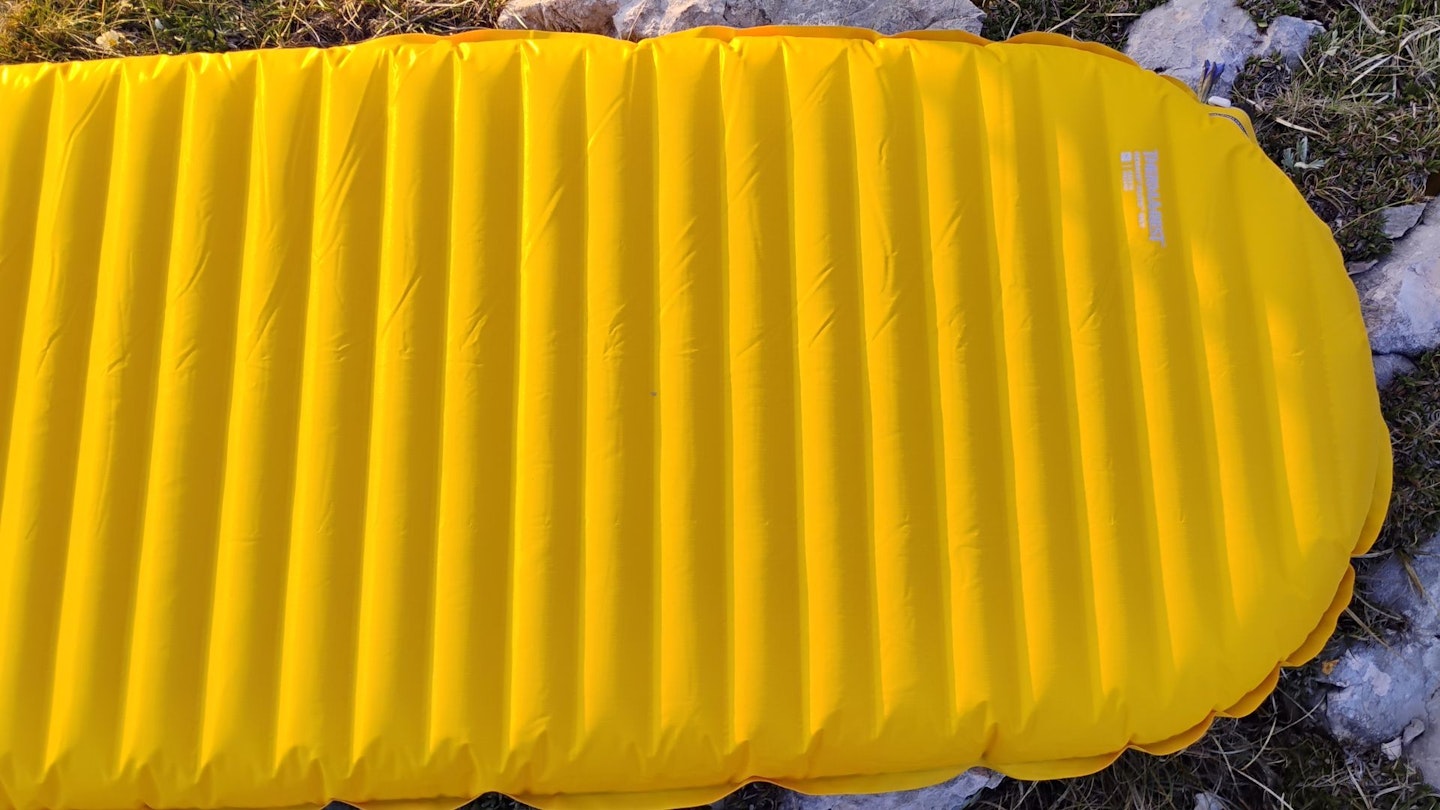
The downside of this is that it’s not suitable for a low-profile tent. I tested it in my old Wild Country tent, which tapers towards the head and toe, and found that my feet were touching the roof of the tent, and there wasn’t much space for my head.
So it’s important to make sure that the NeoAir isn’t too thick for the type of tent you have; if you can comfortably sit up in your tent, it’ll probably be fine.
It’s worth noting that this is a lengthy mat, too. I’m about 5′8″, and thought it was unnecessarily long for summer camping, but the extra warmth should pay off in the autumn/winter. A short version does exist (168cm rather than 183cm), but it’s quite hard to get hold of.
Inflation and deflation
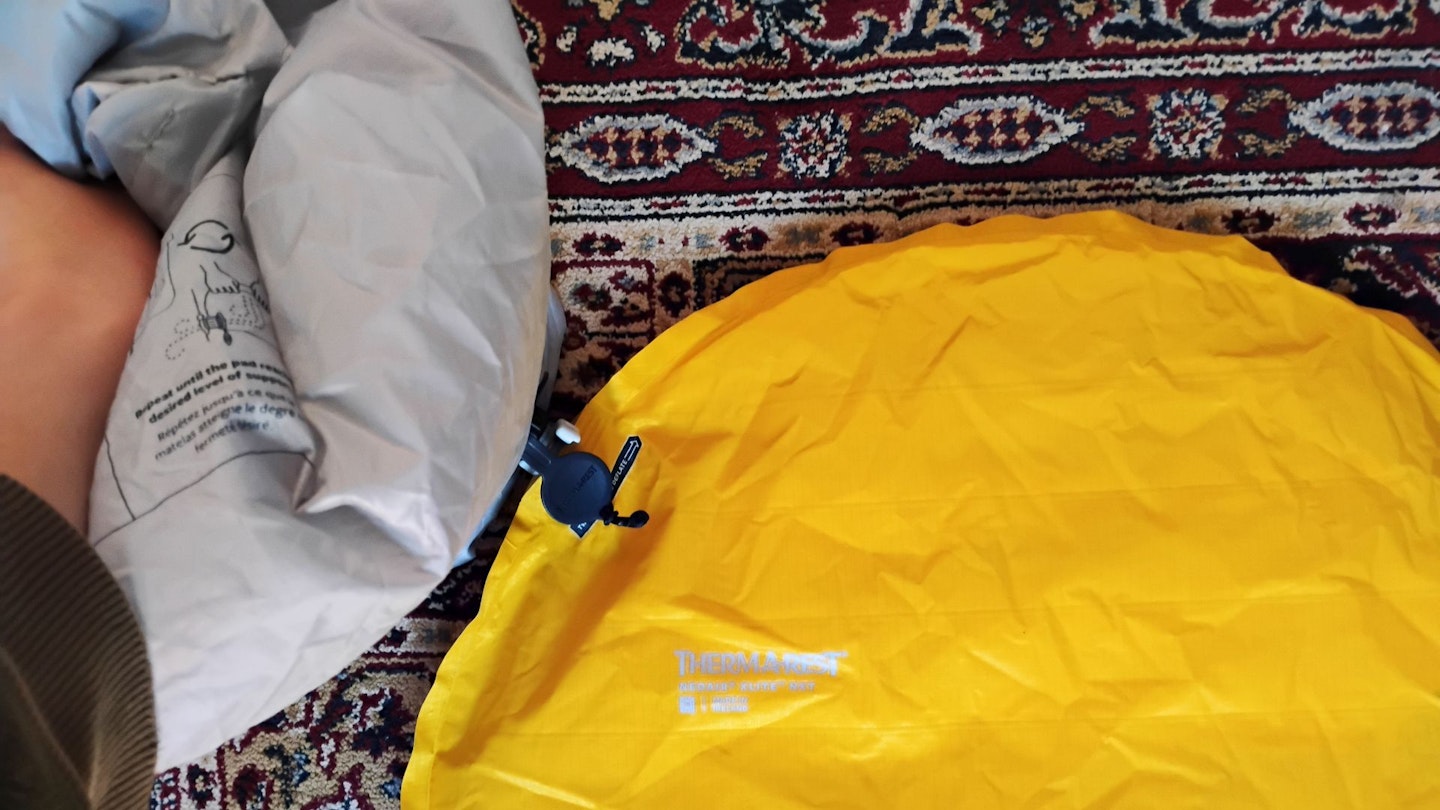
Like other high-end sleeping mats, the Therm-a-Rest NeoAir XLITE NXT inflates via a pump sack, which you blow into from above, then push the air through.
It’s not the quickest to inflate – but this is kind of what you’d expect given how thick it is. I find that it needs about six-seven bags of air. The bag is quite long, which makes it tricky to inflate efficiently, as it ends up flopping about. There’s definitely a knack to it, and I don’t think I’m quite there yet.
There’s a mouth valve too, which isn’t officially recommended to use due to bacteria build-up, but it’s much more straightforward. Deflation is refreshingly simple; the valve has a twist-lock mechanism which you can easily operate while lying on it.
Packing this mat away is exceedingly speedy. When you’re rolling it up, the air whooshes out without any resistance – it almost instantly becomes almost paper-like. That’s great if you like to get up and go in the morning as quickly as possible.
Warmth and R-value
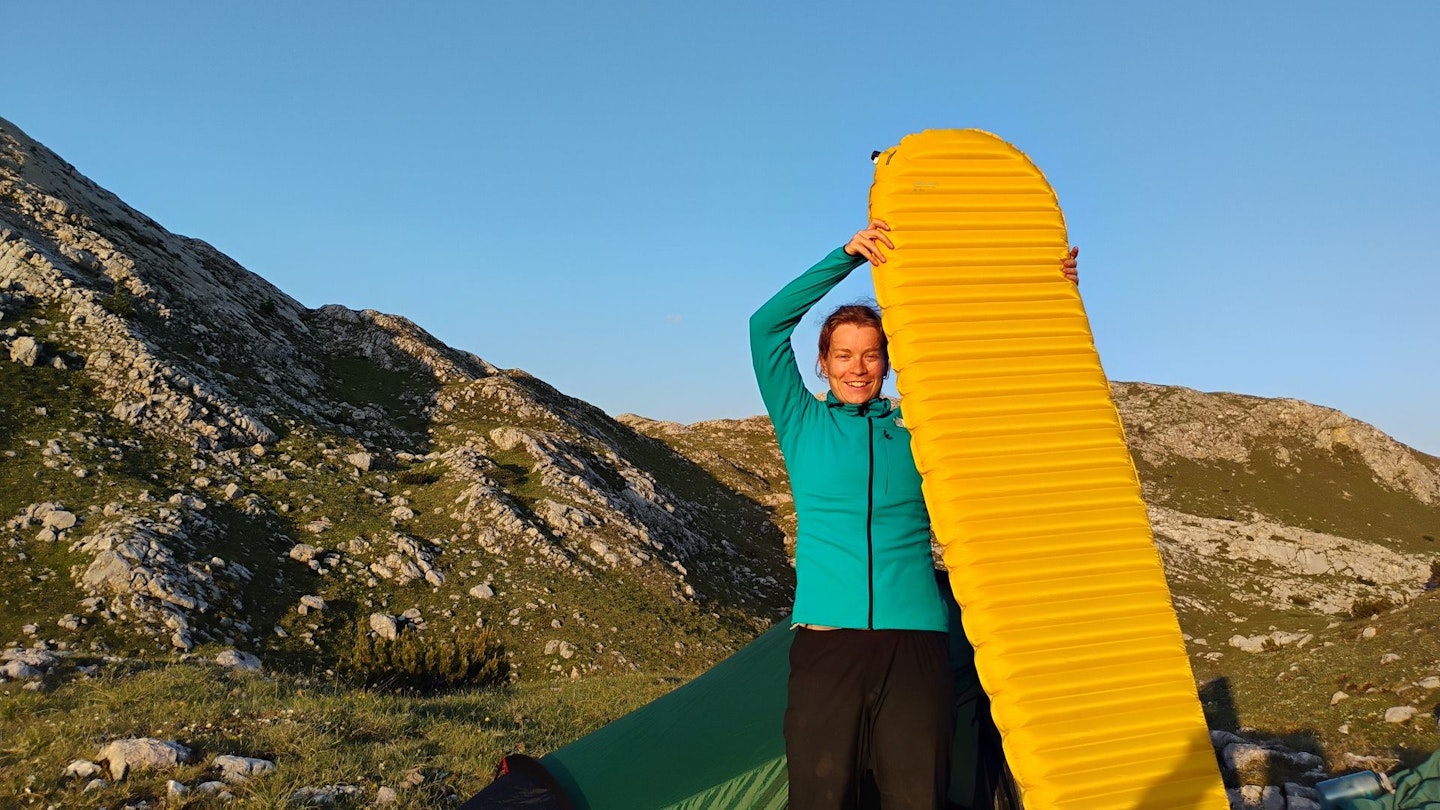
With a reported R-value of 4.5 (boosted from the previous 4.2), the Therm-a-Rest NeoAir XLITE NXT can be comfortably used throughout most of the year. The R-value of a mat indicates how well it insulates you from the cold ground; these values range from 1-2, to 6+.
In spring, summer and autumn in the UK, it’s perfect. It’s unlikely to ever feel too warm, as unlike a sleeping bag, mats don’t actively generate warmth. The sticking point is how much you feel the cold, and whether you do enough winter camping to merit a warmer mat.
For some campers, a rating of 4.5 is suitable for winter camping in the UK; but I’d only use it for mild winter weather. In zero or sub-zero temperatures, you’ll undeniably be more comfy with a warmer mat, like the NeoAir XTherm NXT (this has a rating of 7.3).
One consideration for ultralighters – the relative warmth of this sleeping mat means that in the summer, you can get away with a lighter (less warm) sleeping bag. More insulation comes from your mat, at perhaps less of a weight sacrifice.
So if you like to camp in all but the harshest UK conditions, and you’re looking for one mat that can do it all, then the Thermarest NeoAir XLITE NXT does the job well.
Weight and packed size
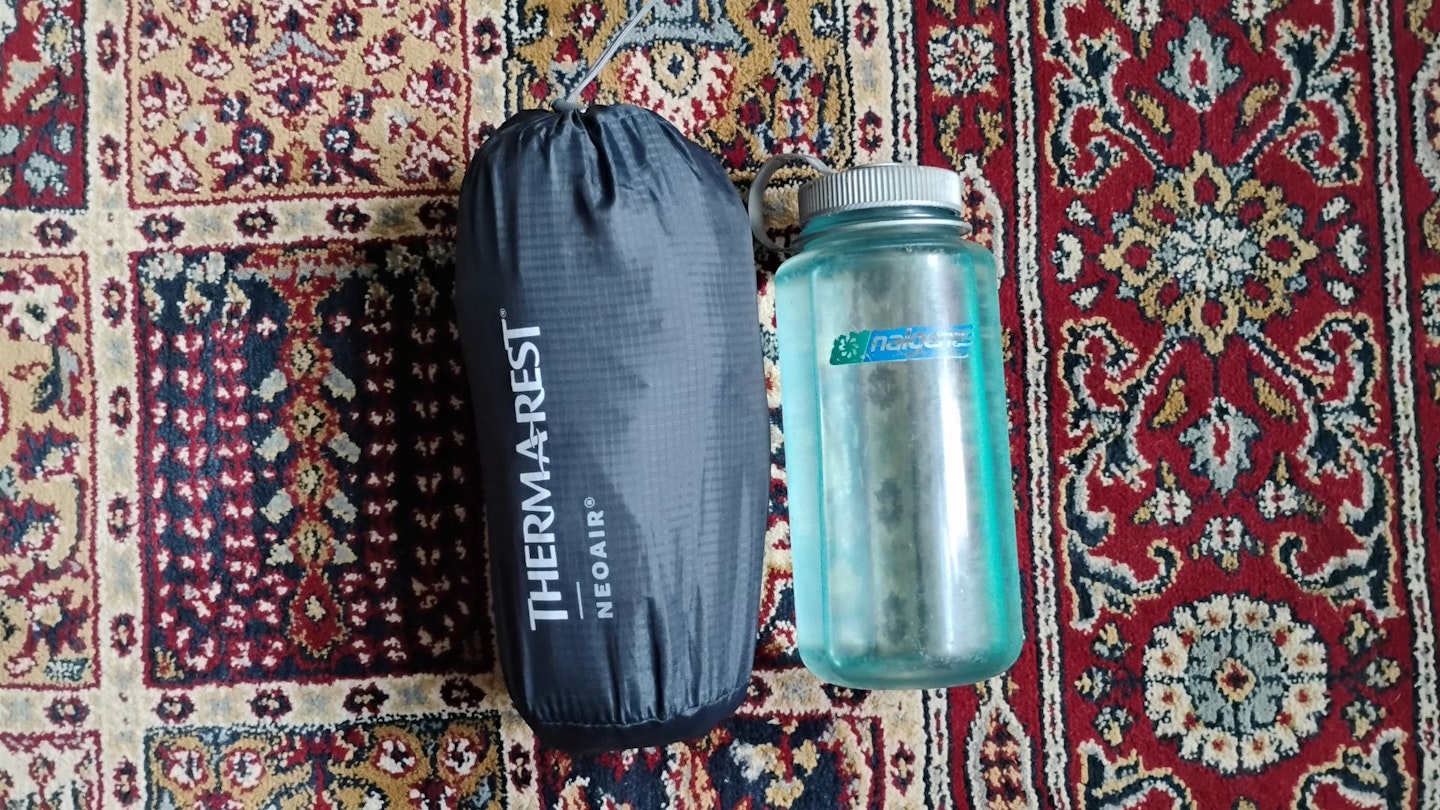
To get the fullest picture of the NeoAir XLITE NXT, you really need to consider weight and pack size. I weighed the regular version at 447g with pump bag and stuff sack included (377g without).
To put that into context, out of all of the sleeping mats we’ve tested, it offers the best warmth: weight ratio. And out of all of the nine mats in Therm-a-Rest’s NeoAir range – all of which are designed for backpacking – the regular version of the XLITE NXT is the lightest.
As a 3-4 season mat, it’s not the lightest mat we’ve tested – and nor should it be. It doesn’t make sense to compare with lighter, 1-2 season mats like the NEMO Tensor Elite, as these are in a totally different ballpark.
Instead, the closest competitors we’ve reviewed are probably the Sea to Summit Ether Light XR, Mountain Equipment Mirrostat and Rab Ultrasphere.
The NeoAir XLITE NXT Regular trumps all of these competitors in terms of both weight and R-value, for pretty much the same price. The pack-size (25cm x 9cm) is smaller than the Mirrostat and Ether Light, but not the Ultrasphere.
Verdict
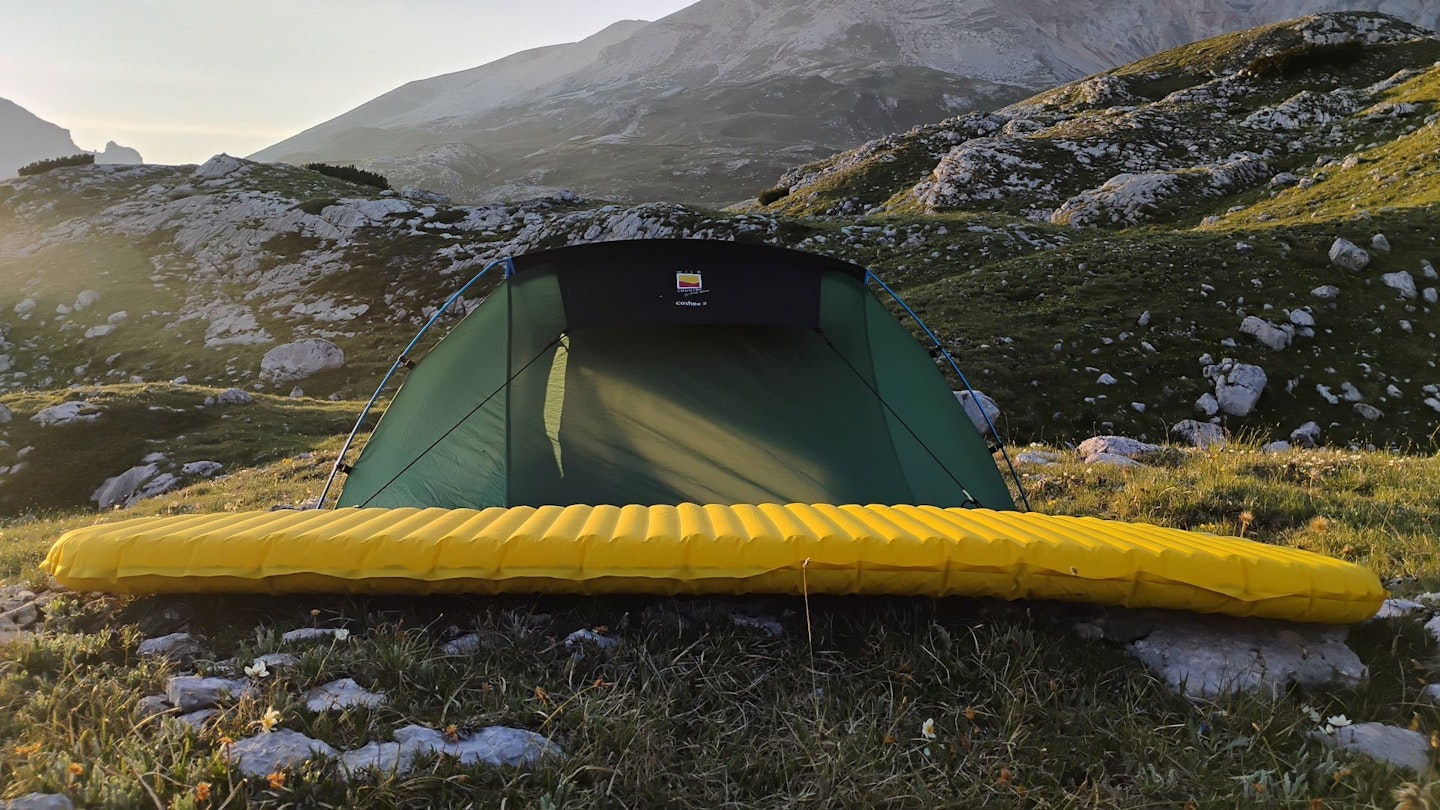
So, what does a happy user of the NeoAir XLITE NXT Regular mat look like? I’m imagining someone who likes to camp regularly, sometimes on uneven terrain; who thinks pack size and weight is almost as important as comfort; and who wants one good quality mat to use throughout most of the year.
The bottom-line is that the XLITE NXT really stands out for its warmth to weight ratio: it’s one of the lightest 3-4 season mats on the market. I also loved how speedy it is to pack away, and appreciated how thick it is on uneven wild camps.
However, some campers might find it too narrow. If you’d prefer some extra wiggle room, and aren’t overly fussed about backpack weight, you’d be better off with the Regular-Wide or MAX Regular-Wide.
Shop this product
About the author
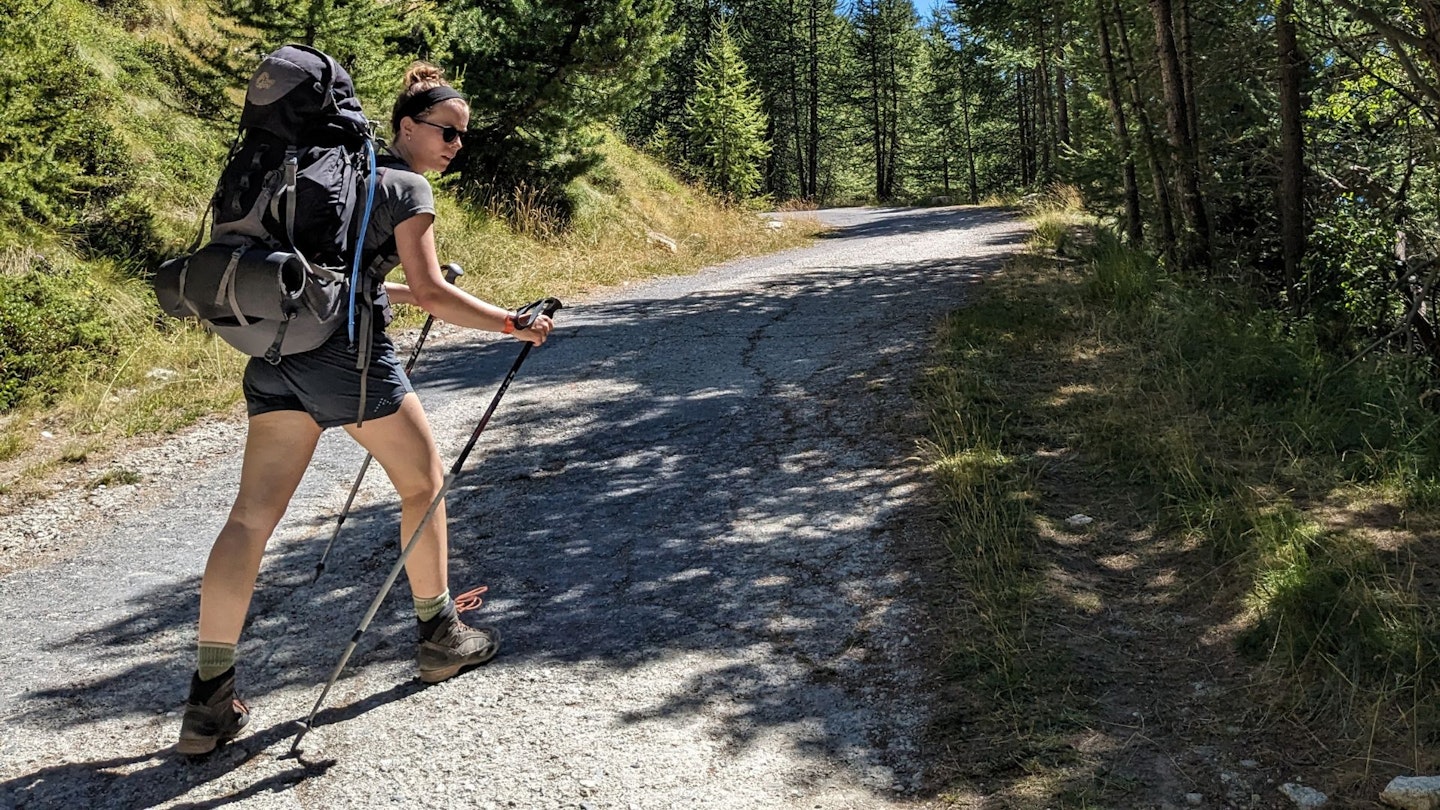
LFTO writer Evie has strained her cardiovascular system on countless steep inclines, having hiked in over ten countries across Europe and beyond. She's a big fan of the long-distance GR routes, her favourites being the GR20 in Corsica, GR221 in Mallorca and GR52 in the Alps.


